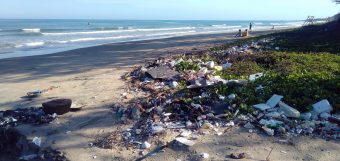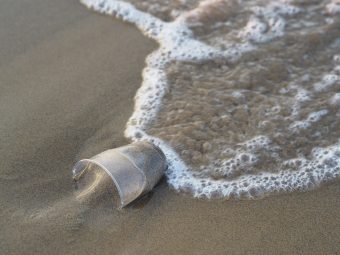
More and more countries are joining the Clean Seas campaign to fight against marine litter and plastic pollution. Over 60 countries – both coastal and landlocked – have signed up to this global movement with ambitious pledges and commitments.
Many have pledged to reduce or eradicate single-use plastics from their societies through stronger legislation and regulation. Others have committed to invest more in national recycling facilities and promote action plans to prevent harm to the coastal and marine environment.
The next phase of Clean Seas is expanding on the source-to-sea approach focusing on the root cause of marine plastic, which mainly comes from the land-based sources and works its way to the sea through lakes, rivers, and waterways.
In this final year of the Campaign, governments have a unique opportunity to join the global action and adopt the necessary policies to beat plastic pollution. We sat down with Leticia Carvalho, Head of the Marine and Freshwater Branch of the United Nations Environment Programme (UNEP), to find out more about what it means to join Clean Seas, and how countries can get on board.
Clean Seas was launched in 2017, and since then, 63 countries have become signatories. What does it mean to be a Clean Seas country?
By joining Clean Seas, countries take steps towards becoming champions to turn the tide of plastic. Joining means agreeing to the Campaign objectives and having access to a platform and best practices to profile your work and encourage others to act. There are no financial implications associated with joining the Clean Seas. Signatories may also request technical support from UNEP to develop their national action plans to tackle litter and plastic pollution. So far, our signatories represent 60 percent of the world’s coastlines. But we need to engage more governments, particularly major plastic producer countries, to succeed in our mission to protect our waters, ecosystems and wildlife from marine litter and plastic pollution.
Why should a country join the current global momentum against marine litter and plastic pollution?
Pollution is one of the three interrelated planetary crisis we face, along with biodiversity loss and climate instability, due to unsustainable production and consumption. We must shine a light on the negative impact of marine litter and plastic pollution on human and planetary health. This becomes even more urgent when one looks along the value chain to the land and seascape (from source-to-sea). Of the 11 million metric tons of plastic entering the ocean, approximately 80 percent comes from land-based sources and works its way to the sea through our lakes, rivers, and other waterways.
More:
A thousand rivers are accountable for nearly 80 percent of the global annual riverine plastic emissions. Yet, this is often overlooked. We hope to engage governments at the source to raise awareness and to strengthen legislation to encourage better business and disposal practices. Ultimately, this is an issue that affects the health of our planet, our societies, and our livelihoods. Governments need to play their part in securing their citizens’ right to a safe, clean, healthy and sustainable environment, much of which can happen through encouraging and rewarding private sector innovation.

Are there any sub-groups of countries that have a significant role to play?
Key water bodies found in upstream countries such as rivers and lakes represent some of the main pathways for the flow of plastics and litter to our coasts and oceans. Hence, the need to get their governments on board in our efforts to prevent such flow. So far, the Campaign has been joined by two landlocked countries. The first was Paraguay and Uganda joined last month.
Small Island Developing States (SIDS) also have the most to gain, and to lose, from not rapidly tackling the pollution problem since most rely heavily on tourism to some of the most idyllic beaches and underwater habitats on the planet. On average, tourism accounts for almost 30 percent of SIDS’ GDP. They have also been at the front line on the COVID-19 pandemic, both in terms of loss of travelers but also with having a bird’s eye view of the impacts of single-use personal protective equipment washing up on their shores. Many SIDS have some of the toughest regulations against single-use plastics in place and are true leaders in their efforts to safeguard our seas and ocean from man-made pollution. Thirteen of the 39 SIDS have already joined Clean Seas, representing one of our largest sub-groups of signatories. We hope to join hands with those who have not done so yet and coordinate their truly impressive efforts with our campaign objectives.
How can a country join the Clean Seas campaign?
It is easy! A country simply needs to decide on the level of commitment they wish to undertake, aligned with their current and future ambitions to tackle this problem and send an ‘Expression of Interest’ to the UNEP Executive Director.
UNEP stands ready to help the country team navigate this process and provide technical expertise to develop national actions plans. Our team has recently prepared an eBook to guide interested governments in this regard. It presents visually and interactively what it means to be a Clean Seas country, why it is urgent for more governments to join the momentum and what options are available for taking action.
Source: UNEP
